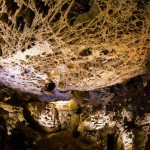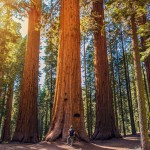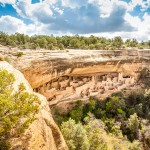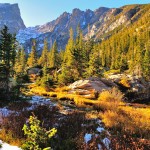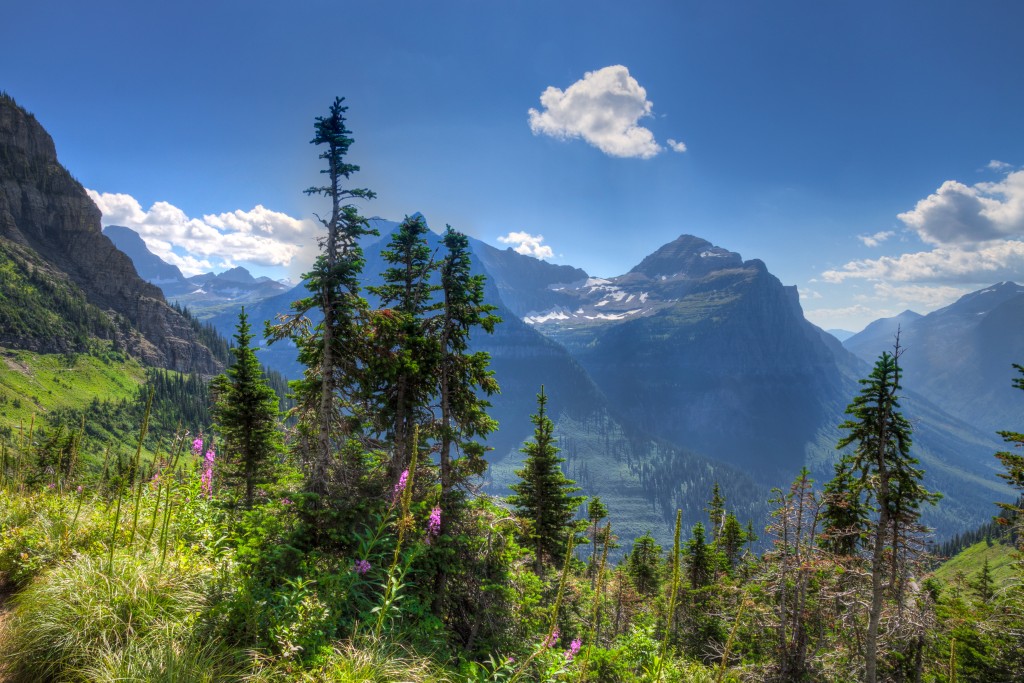Yosemite National Park - A Vast Natural Resource
Though Yosemite was one of the earliest candidates for the country’s first National Park, it wasn’t signed into law until October 1890 – 18 years after Yellowstone and one week after Sequoia. Today, it is the second of an impressive nine National Parks located in California. At 1169sqm it is nearly double the size of Sequoia National Park and is farther north, sitting on the western slopes of the Sierra Nevada (1). Its mixed elevation, geological variation and diverse flora and fauna make it an important research site for geologists, hydrologists and biologists of all disciplines.
Yosemite had its international importance recognized in 1984 when UNESCO listed it as a World Heritage Site (2) primarily under the categories:
- Clause vii: Outstanding natural beauty. Yosemite has five of the world’s highest waterfalls, steep valleys, alpine meadow and sequoia groves amongst its assets
- Criterion viii: its contribution to the understanding of glaciation and Ice Age processes, particularly for effects on granite. Nowhere else in the world has contributed so much knowledge to glaciation
Its most famous monuments are the rock formations including the cliff El Capitan, several domes and numerous valleys and canyons – as well as mountain ranges, hills, meadows and plains; much of the underlying geology is granite and this is reflected in the soils and subsequently, affects the profile of biological life. Millions of people visit every year: hikers, cyclists, rock climbers, for water sports and camping (1) though most visitors tend to stay in one small area of the main tourist center. In the 1990's, a portion of Yosemite was signed into law as designated Wilderness, giving it greater protection; the size of the wilderness area increased relatively recently.
History of Yosemite National Park
Researchers have found archaeological remains dating back 3,000 years across the 1,500 sites within the confines of the park, but the true antiquity could date back as far as 10,000 years (3). We also know that it was home to two distinct Native American tribes during prehistory (2), distinct cultures that separate two different landscapes within what we understand to be the makeup of prehistoric California. It’s through sites like this that archaeologists and anthropologists can come to understand the prehistory of California, the USA and its wider context in the North American continent.
Interest in Yosemite Valley did not capture the public imagination until the Californian Gold Rush and the Mariposa War in the 1850s; reports came back from the front lines about the beauty of the landscape and the severe and awe-inspiring geological formations. Early visitors were drawn to the challenge of hiking the tracks (4). It is believed in those early decades that only 650 people made the perilous journey on foot, by horse or by carriage. It had a quiet history and following declaration that it would become the country’s third National Park in 1890 (1) after decades of concerted effort, including government grants, to protect the area from overgrazing and other damaging forms of exploitation (5). As with many other early National Parks, it initially came under protection of the US Army who brought many improvements to access and protected the area from poachers amongst other things. Yet War would lead to their withdrawal and the establishment of the National Parks Service in 1916; the land was then transferred to the jurisdiction of that agency.
The railroad did not arrive until the early part of the 20th century. As with most other places, this permitted many more visitors to see the wonders of the park that they could previously only read about in books or see in pictures and photographs. Everyone was desperate to capture their piece of the landscape – particularly the waterfalls, giant cliff faces and rock features.
In more recent years, the park has seen itself subject to greater protection when Congress designated an area of 677,600 acres as protected wilderness (6), later expanded to over 704,000 acres. This meant that extra measures were required to reduce traffic and carbon emissions and do something about dangerous burning that could lead to destruction of sensitive areas.
The Flora of Yosemite
The plant life within Yosemite is incredibly diverse; this, experts and researchers put down to the six distinct vegetation zones in the area (2) classified by altitude variation. It is a mix of granite upland and valleys, open pasture, lakes and wetlands, woodland and alpine meadow. The underlying geology, soil types and variation in moisture across the lowlands and highlands create microclimates even within a relatively small area. This means that some species are native to the park not found anywhere else have often evolved themselves into a niche (7).
The majority of the landscape is dominated by the topography and profile of the Sierra Nevada. Nevertheless, the diversity means there are 1,200 species of flowering plant along with various other ferns, bryophytes and lichens and three protected Sequoia groves in the park (2). As far as native wildflowers go, some 1,450 have been identified (8). There are three forested zones: a hot, dry subtropical area at the foothills; the second is a more temperate zone which remains mild all year round, (and this is where the sequoia groves are found) and the colder upper regions that experience snow cover in the winter. This is only the woodland zones; there are also familiar plants that are native to wetlands, lakes, rivers and mountainous areas (7).
Some of the most common plants to be found in Yosemite include Scarlet Monkeyflower, Mountain Pride, Shooting Stars, Asters, Buttercups, Lupines and a number of native parasitic plants. Over half of the native species in Yosemite National Park are officially rare plants; these include Yosemite Onion (9), Tompkin’s sedge and Congdon’s woolly sunflower (10) – all of which are protected native species.
Flora Conservation Issues
There are presently eight plant species listed as threatened or endangered in Yosemite (2). The reasons for these plants being under threat are varied and include some of the following.
As with most natural landscapes, there is a real and present problem with invasive species – most of which it is understood were brought from eastern states and from Europe through the 19th century. One example of a native Mediterranean plant, and one of the most prevalent invasive species in the park today that is a threat to native plant species, is the Yellow Starthistle (11). When it colonises, it dominates the area because of the length of its root and difficulty removing. In its native European Med basin, it is a well-adapted part of the ecosystem and a source of food for native fauna. This is not so where it has been introduced in South America, Australia and the USA where fauna do not eat it. The problem is so bad, that government surveys have found it is the most prevalent invasive species in the state of California and found in over 18 million acres across the USA (12, p5), with most distribution in the west.
Geographical limitation is a problem in itself that could lead to natural extinction under natural environmental change. The severe changes between the landscapes of Yosemite, as well as the changing seasons and overall meteorology mean that many of these plants are already walking a fine line (13). Population islands are created through the existence of microclimates and very localised growing zones. As with elsewhere, human induced climate change is expected to impact some of these threatened species.
Forest fire is a concern in many National Parks and the temperate nature of Yosemite is no exception. In 2013, a Rim Fire that started in a remote canyon destroyed some 79,000 acres of parkland. The fire, believe to have been caused by the actions of a single camper, cost in the region of $127m to clean up. Knowing that parts of the park were home to threatened plant species, it was a careful programme to promote new growth and protect several rare and endangered species (14). Other positive actions taken by the National Park Service include the reclamation of abandoned campsites to promote the resurgence of native plant species; in turn, this is expected to aid native fauna species too (20).
The Fauna of Yosemite
The park is home to some 67 mammalian species; 32 of these are rodents. There are also 221 bird species, 18 types of reptile, 10 amphibian species and 11 types of fish – six of these are endemic to Yosemite and are under observation, or threatened or at risk. The most common animal species is the butterfly, and these are amongst the most studied animals in the park (15). Butterflies are important pollinating insects the world over and many plants within the park rely on the diverse and large number of species to reproduce; they are incredibly important to the ecology of the park and promoting and encouraging butterfly-friendly landscapes for the 60 species presently living in the Sierra Nevada area (16). As we will see below, some of the most important butterflies in the park is presently threatened.
Similar to the plant species of Yosemite, it is the diverse topography that has permitted a wide variety of fauna to thrive in the park –insects, reptiles, birds and mammals are all well represented between the desert-like landscape, alpine woodland, rocky zones and wetlands. Yosemite is one of the richest sources of animal diversity and therefore an important research centre to biologists as well as a focus point for conservationists. Common large animals include the black bear, Sierra Nevada red fox, mule deer, coyote, bobcats and California ground squirrel, rattlesnakes, rainbow trout and great grey owls amongst others (18). It is home to a number of important birds of prey thanks to the attractive mountainous area of the Sierra Nevada.
Fauna Conservation Issues
There are a number of endangered or threatened animals in the park. The bald eagle is listed as endangered and another bird of prey – the peregrine falcon – is presently vulnerable as it is in many other places around the world where it is native (2). As mentioned above, important pollinating butterflies are prevalent in the park; 60 species live in the Sierra Nevada – 35 of which live nowhere else. Because of this geographical limitation, alpine butterflies are in decline, some are threatened (17). A major study in 2007-8 permitted researchers to finally understand the population numbers and make provisions for their protection where necessary.
There are cases where non-native species have been introduced into Yosemite. Beaver and white-tailed ptarmigan, though native to North America, are not indigenous to Yosemite (2); both have in their own ways upset the delicate ecology and continue to present problems to the National Park’s conservation team. For the beaver, it is a constant battle to remove their dams (19). This is often for flood prevention more than anything else, though there is mixed evidence about the impact on wildlife and natural stream channels (21).
Bighorn sheep became extinct in Yosemite since 1914 – impacting the wildlife significantly at the time. After an extensive studied in the 1980s, the decision was taken to reintroduce the species and they have been a feature of the park again since 1986 (2). They now play an important part of the park, and especially the designated wilderness area of Yosemite.
Due to pressures on food supply, there are problems with bears for human residents. To reduce these problems, people who live in Yosemite have stringent limits on what they throw away and what they can do with it. This has demonstrated a 65% reduction in problems with bears (22). Though a pest to humans, there are problems to the ecology when bears are not eating their natural diet – just as it would with greatly reduced numbers or extinction in the park.
Ongoing Conservation Challenges
As with other National Parks and protected landscapes, there are threats to the ecology of Yosemite. We are now fully aware of the dangers of introducing non-native species and for government authorities the world over, it is a constant battle to keep population under control whether introduced deliberately or accidentally. Beavers, white-tailed ptarmigans and the introduction of the yellow starthistle have already had an impact on Yosemite.
We know that climate change is a major concern; in most cases, we understand the problems the impact it is already having and is going to have. Yosemite is especially delicate because of the severe and changeable nature of its microclimates. Within a relatively small area, there are granite uplands, temperate slops and almost desert-like lowlands amongst its tree cover.
Yosemite is home to a large number of waterfalls. California has experienced drought over the last few years, leading to forest fires in critical areas of the state; Yosemite too has suffered from forest fire. The drought is also expected to lead to the drying up of several critical waterfalls and already we have seen the effects of this (23). The implications for the water table and for the ecology of the park is of considerable concern also.
Sources
(1) http://www.nps.gov/yose/learn/management/statistics.htm
(2) http://whc.unesco.org/en/list/308/
(3) http://www.nps.gov/yose/learn/historyculture/archeology.htm
(4) http://www.nps.gov/yose/learn/historyculture/index.htm
(5) http://constitution.org/uslaw/sal/013_statutes_at_large.pdf
(6) http://www.wilderness.net/NWPS/wildView?WID=662
(7) http://www.nps.gov/yose/learn/nature/plants.htm
(8) http://www.nps.gov/yose/learn/nature/common-wildflowers.htm
(9) http://www.calflora.org/cgi-bin/species_query.cgi?where-taxon=Allium+yosemitense
(10) http://www.calflora.org/cgi-bin/specieslist.cgi?where-genus=Eriophyllum
(11) http://www.invasivespeciesinfo.gov/plants/yellowstar.shtml
(12) http://www.invasive.org/weedcd/pdfs/StarthistleBook.pdf
(13) http://www.nps.gov/prsf/learn/nature/rare-and-endangered-plants.htm
(14) https://yosemite.org/projects/survey-yosemites-rare-flora-after-the-rim-fire-2015/
(15) http://www.nps.gov/yose/learn/nature/wildlifespecies.htm
(16) http://www.yosemitepark.com/yosemite-wildlife.aspx
(17) http://www.yosemite.ca.us/library/yosemite_nature_notes/27/27-4.pdf
(18) https://www.jstor.org/stable/3801743?seq=1
(19) http://www.livescience.com/43818-yosemite-bears-food-stealing-study.html
(20) http://www.livescience.com/43667-california-natural-display-drought-effects.html







